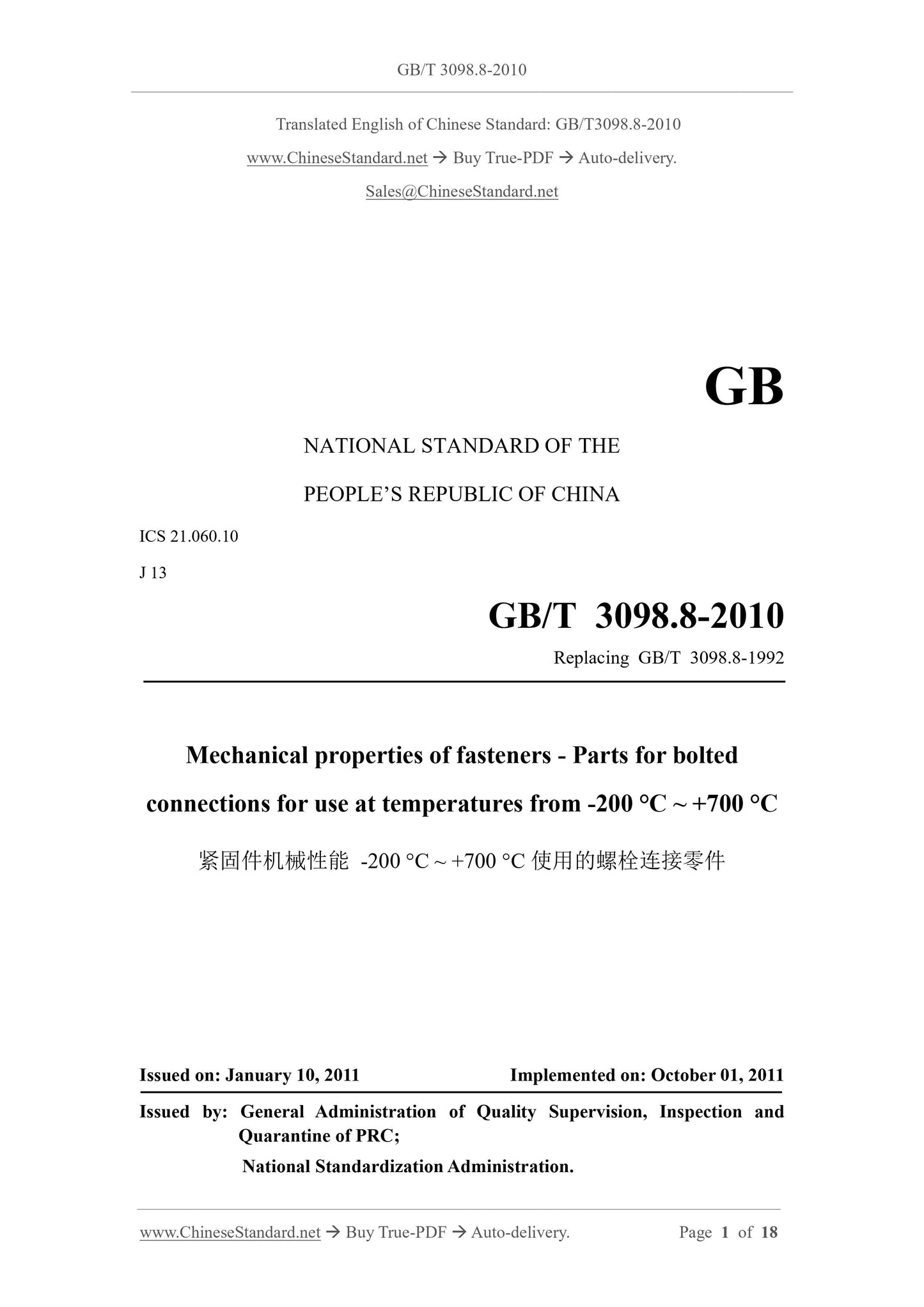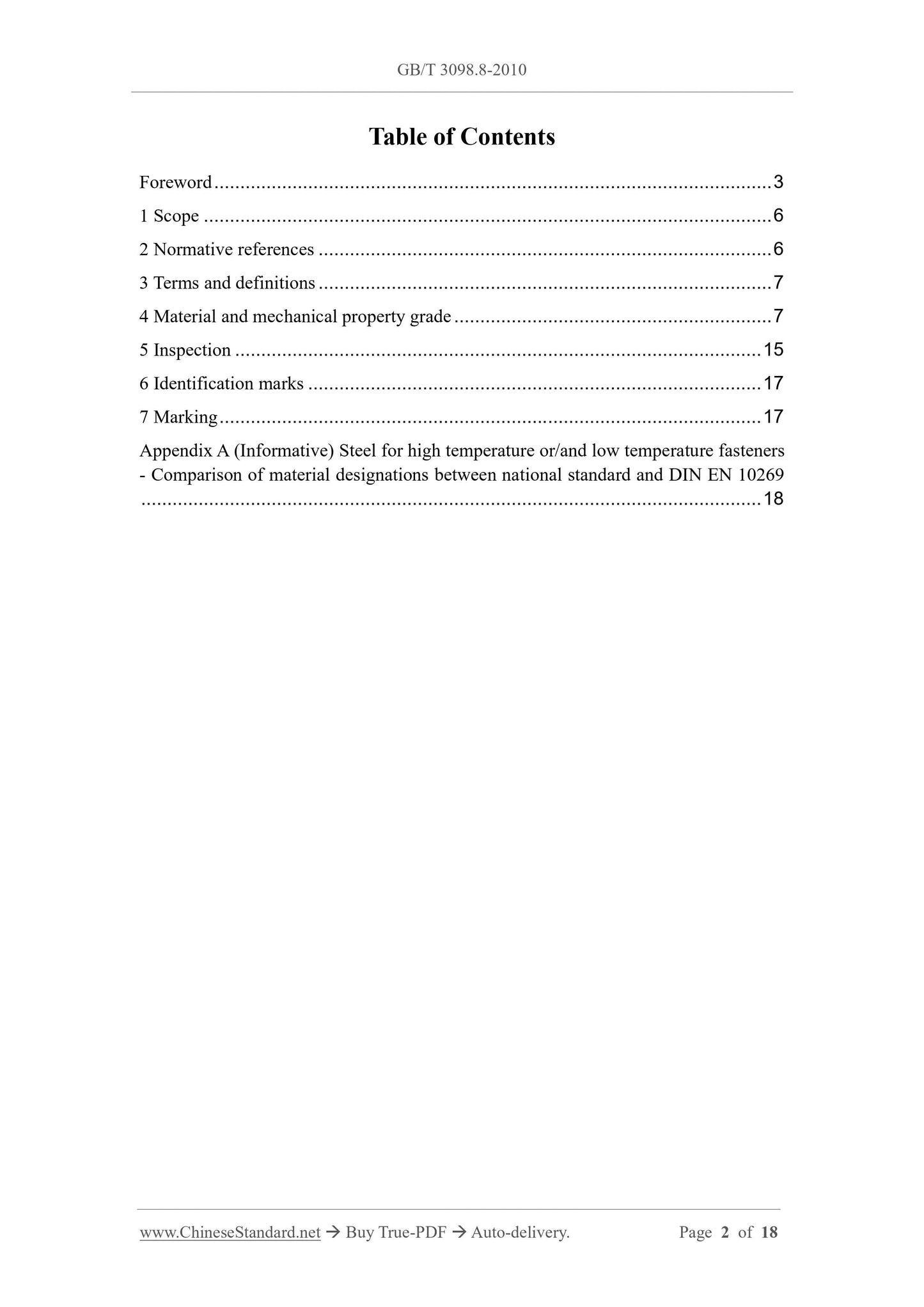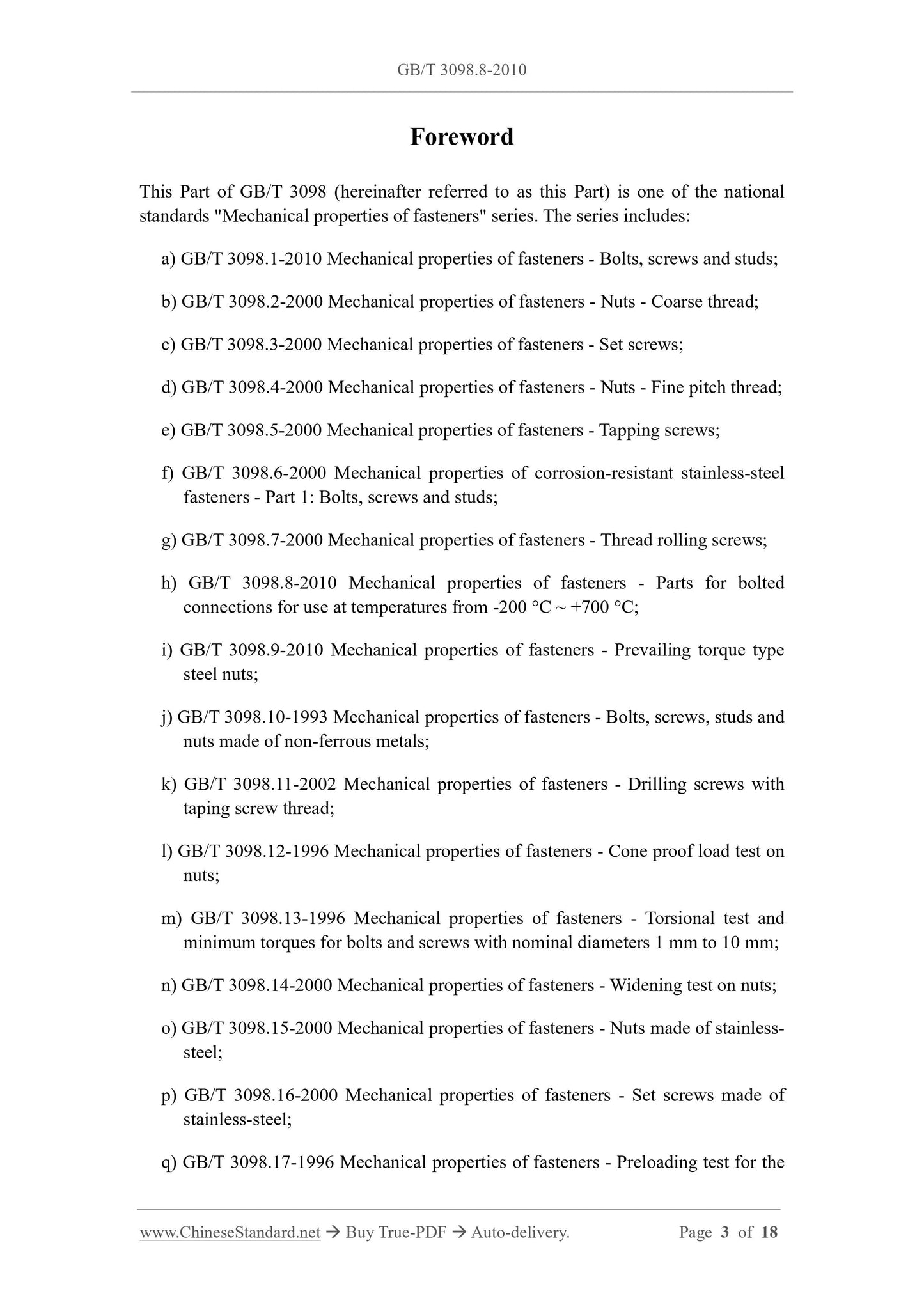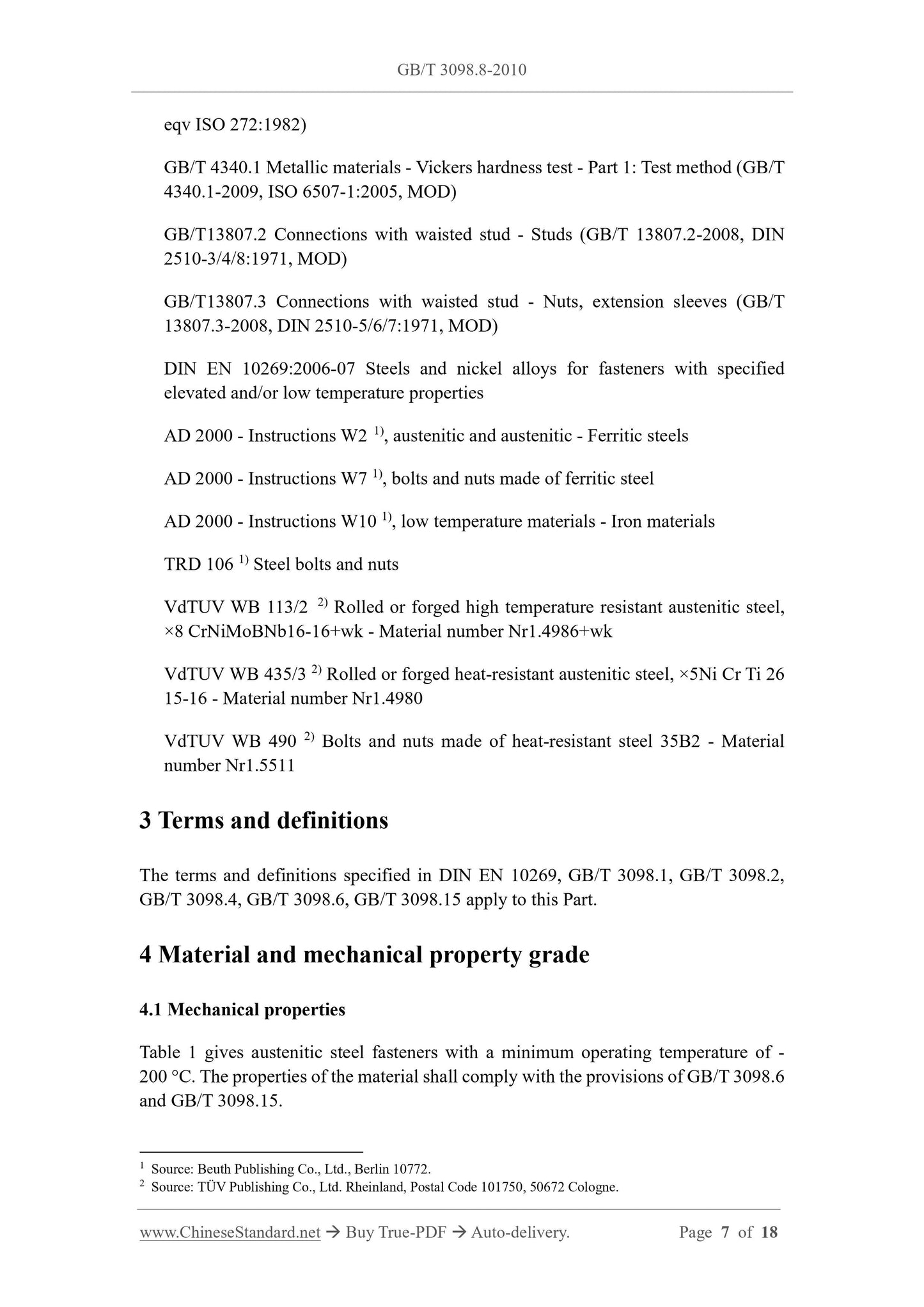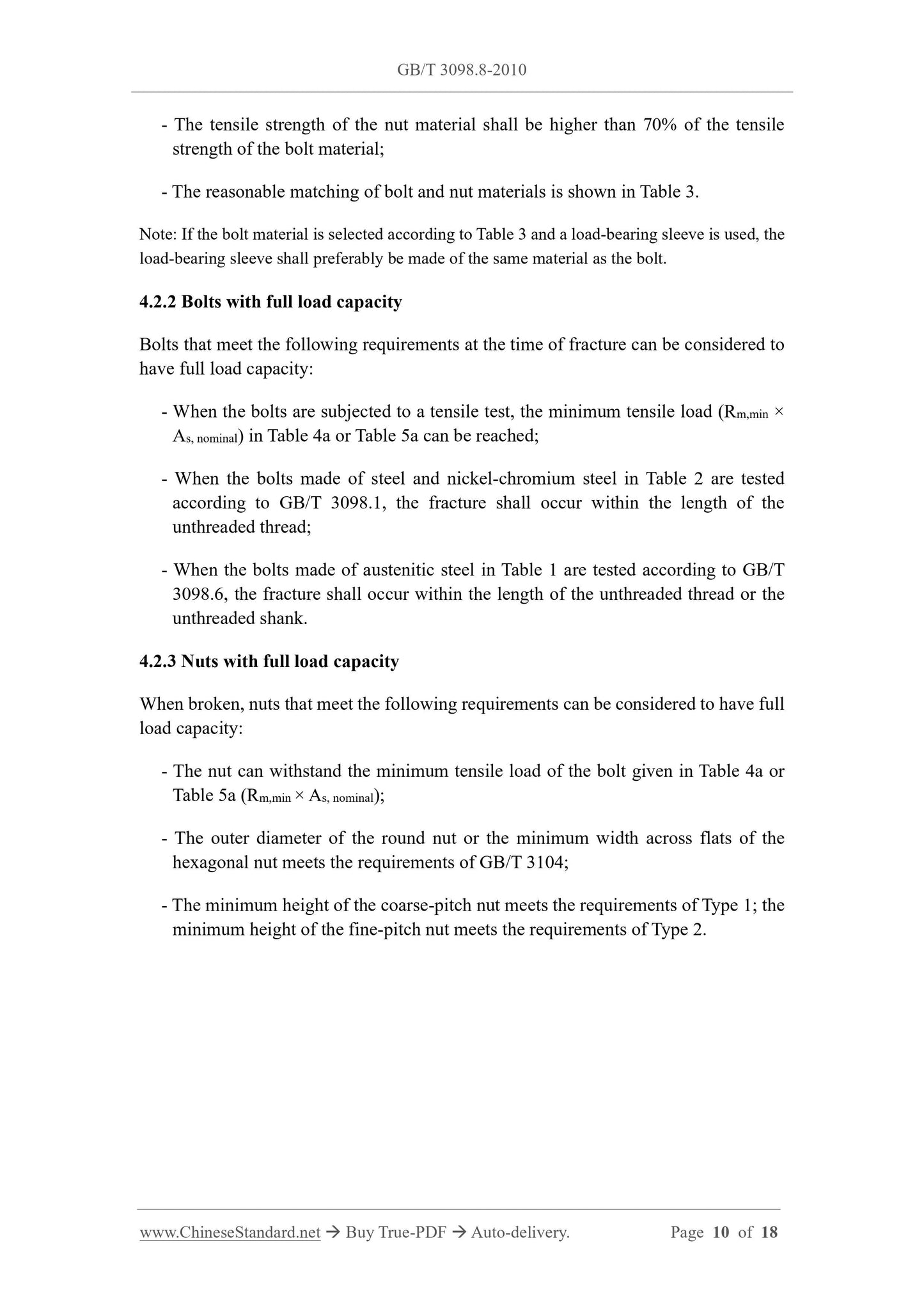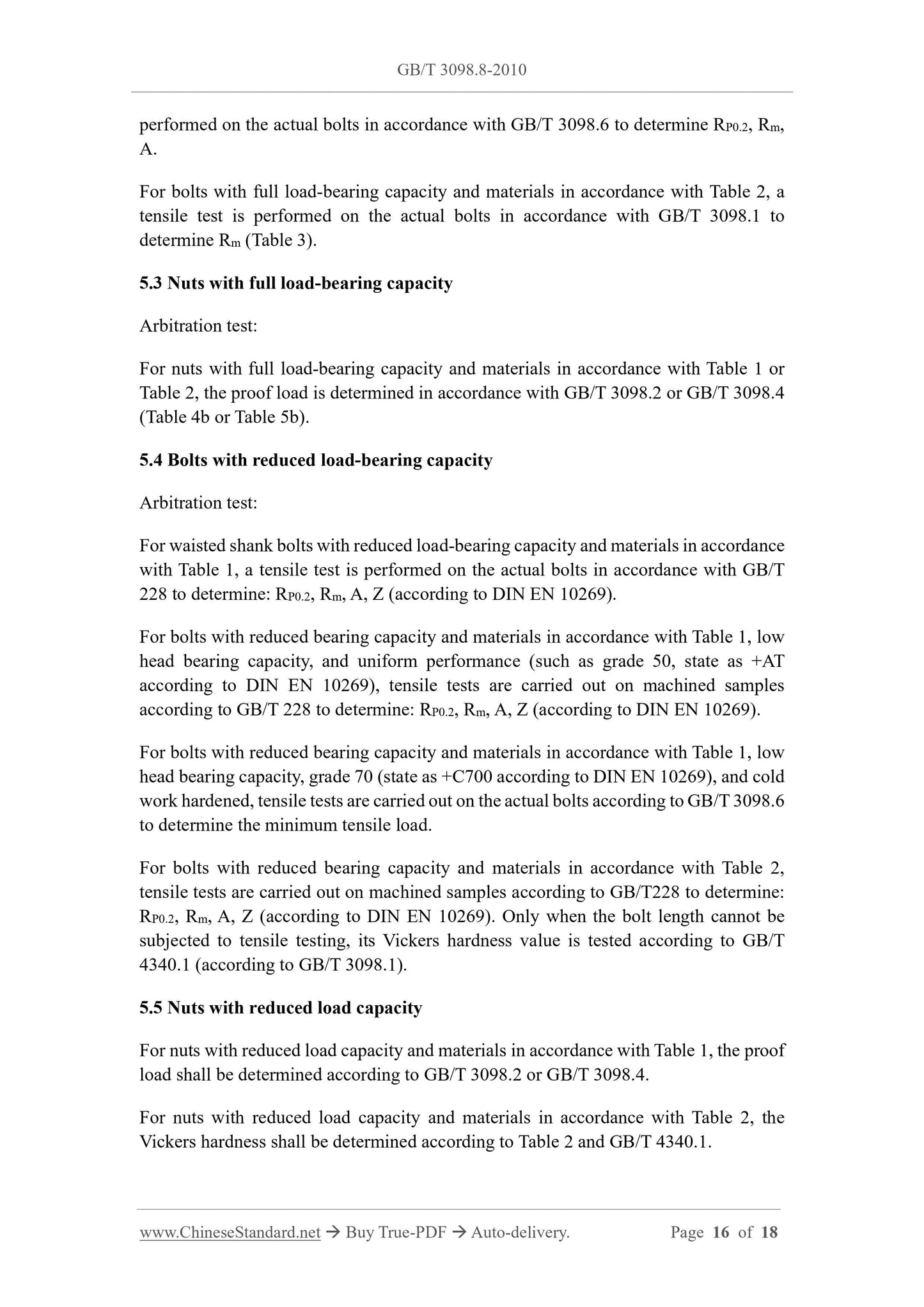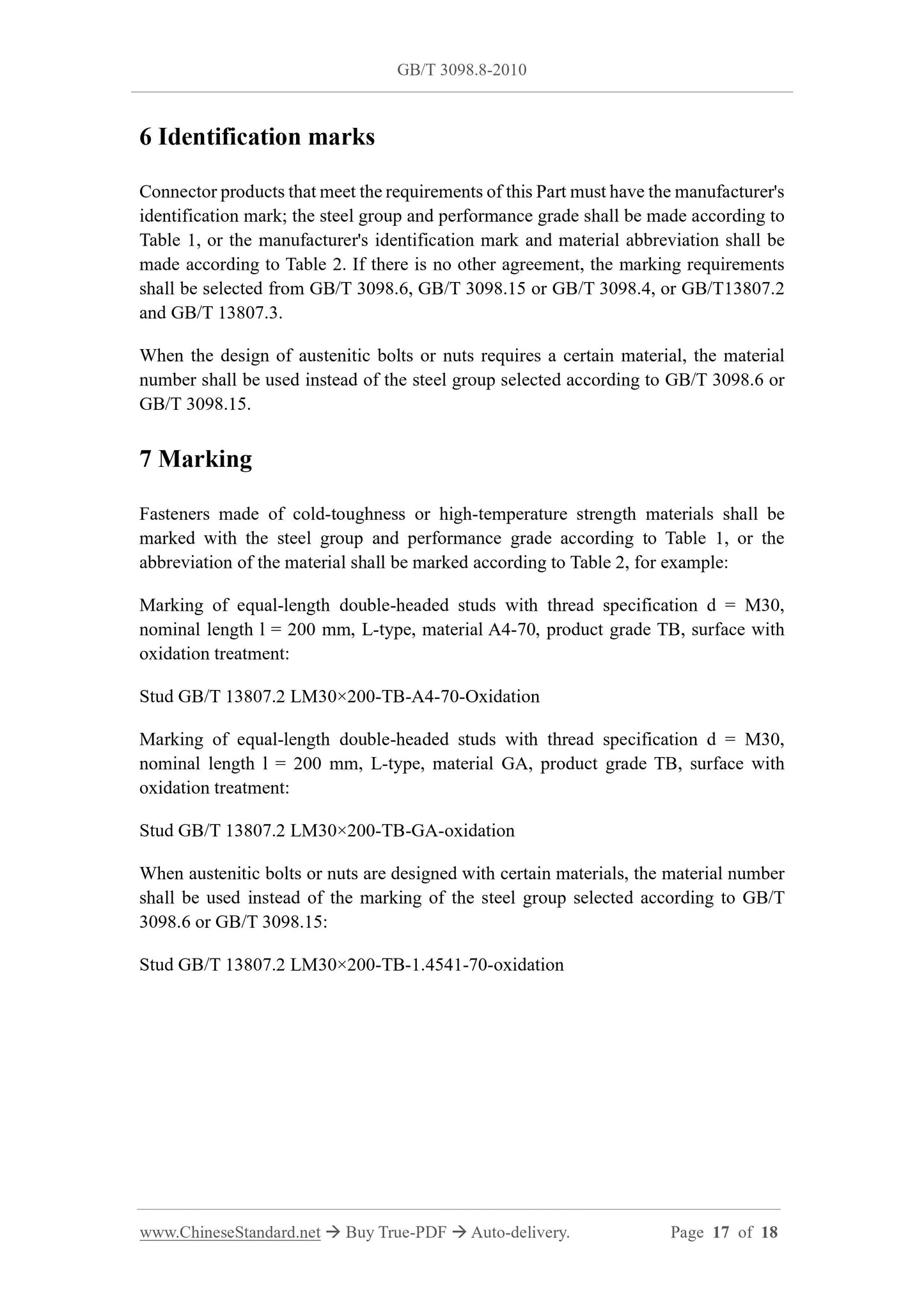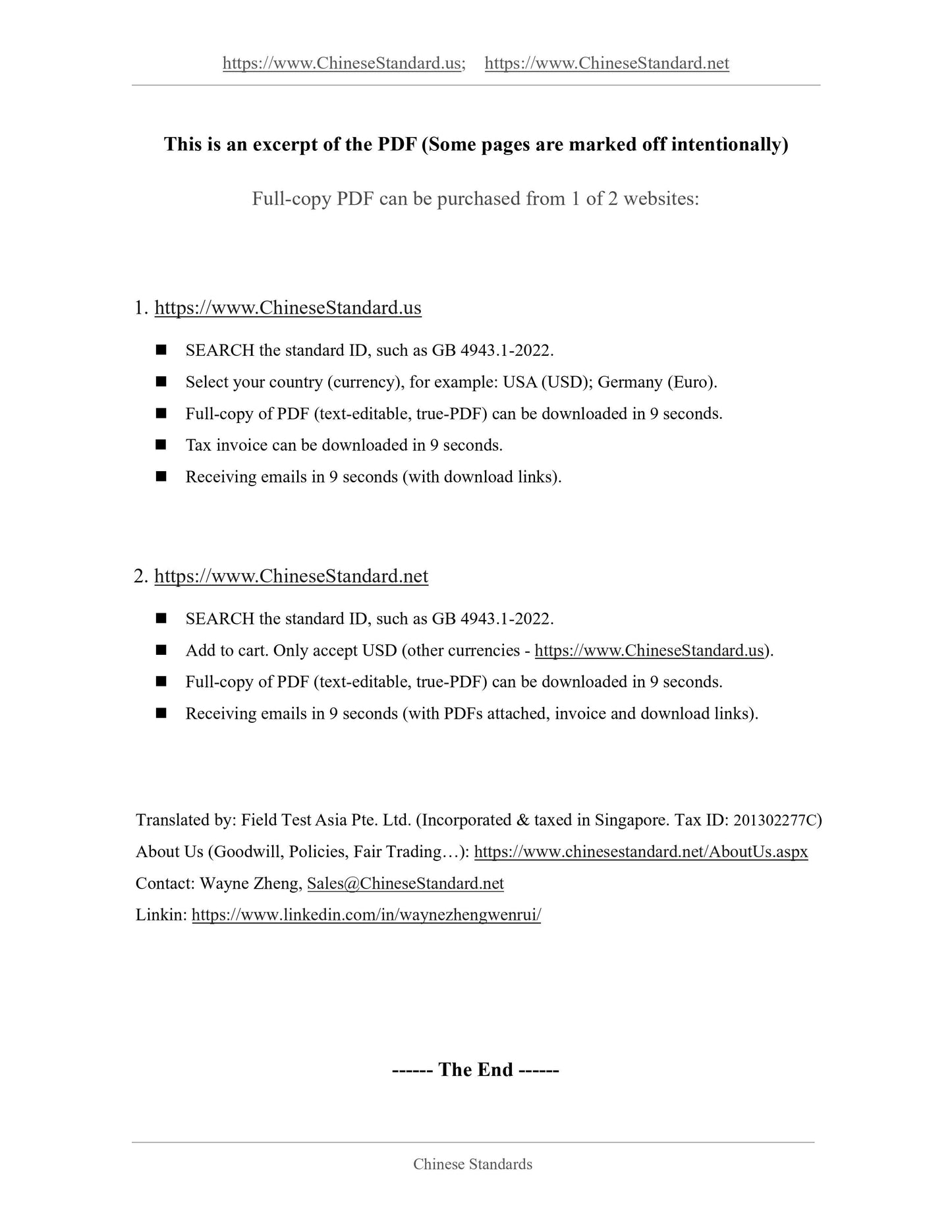1
/
of
9
www.ChineseStandard.us -- Field Test Asia Pte. Ltd.
GB/T 3098.8-2010 English PDF (GB/T3098.8-2010)
GB/T 3098.8-2010 English PDF (GB/T3098.8-2010)
Regular price
$155.00
Regular price
Sale price
$155.00
Unit price
/
per
Shipping calculated at checkout.
Couldn't load pickup availability
GB/T 3098.8-2010: Mechanical properties of fasteners -- Parts for bolted connections for use at temperatures from -200 Celsius~+700 Celsius
Delivery: 9 seconds. Download (and Email) true-PDF + Invoice.Get Quotation: Click GB/T 3098.8-2010 (Self-service in 1-minute)
Newer / historical versions: GB/T 3098.8-2010
Preview True-PDF
Scope
This part of GB/T 3098 specifies the material designations and mechanical propertiesof bolts and nuts, as well as the relevant technical requirements for low temperature
toughness at -200 °C and high temperature strength at +700 °C.
As an important supplement to GB/T 3098.1, GB/T 3098.2, GB/T 3098.4, it is
applicable to the mechanical properties of fasteners in special working environments
with working temperatures below -50 °C or above +150 °C.
Basic Data
| Standard ID | GB/T 3098.8-2010 (GB/T3098.8-2010) |
| Description (Translated English) | Mechanical properties of fasteners -- Parts for bolted connections for use at temperatures from -200 Celsius~+700 Celsius |
| Sector / Industry | National Standard (Recommended) |
| Classification of Chinese Standard | J13 |
| Classification of International Standard | 21.060.10 |
| Word Count Estimation | 15,144 |
| Date of Issue | 1/10/2011 |
| Date of Implementation | 10/1/2011 |
| Older Standard (superseded by this standard) | GB/T 3098.8-1992 |
| Quoted Standard | GB/T 228; GB/T 3098.1; GB/T 3098.2; GB/T 3098.4; GB/T 3098.6; GB/T 3098.15; GB/T 3103.4; GB/T 3104; GB/T 4340.1; GB/T 13807.2; GB/T 13807.3; DIN EN 10269-2006-07; AD 2000-˵���� W2; AD 2000-˵���� W7; AD 2000-˵���� W10; TRD 106; VDTUV WB 113/2; VDTUV WB 435/3; VDTUV WB 490 |
| Adopted Standard | DIN 267-13-2007, IDT |
| Regulation (derived from) | Announcement of Newly Approved National Standards 2011 No. (No. 166 overall) 1 |
| Issuing agency(ies) | General Administration of Quality Supervision, Inspection and Quarantine of the People's Republic of China, Standardization Administration of the People's Republic of China |
| Summary | This Standard specifies the bolt and nut material grades and mechanical properties, as well as the technical requirements for a low-temperature toughness and + 200��C temperature strength of 700��C. As GB/T 3098. 1, GB/T 3098. 2 and GB/T 3098. 4 an important complement to apply to work ju lower than -50��C to + mechanical properties or from special working environment of fasteners 150��C. |
Share
